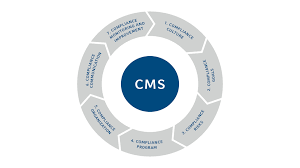Enterprises around the globe are turning to risk management software for a variety of reasons. These applications have been designed to provide enterprise owners and operators with the tools and advanced functions necessary to effectively manage their businesses’ risks. These applications are designed to perform a variety of tasks including: identifying and managing risks, and analyzing risks. The primary objective of risk management software is to minimize the impact of business failures on the organization’s internal and external assets.
The key components of risk management software include: enterprise risk management tool, compliance management tool, and dashboard. The enterprise risk management tool includes features that help operators identify and manage risks. It also helps them build a framework in which they can effectively deal with and monitor risks.
Compliance management tool is an important component of risk management software. Compliance tools help the enterprise to identify areas of risk, define appropriate policies and procedures, and implement them. It also helps the enterprise to develop and implement effective risk control processes. The tool may be web-based or desktop-based. Dashboard is a graphical interface that allows managers to manage and monitor all risk items in an enterprise.
The key feature of risk management software is the risk dashboard. This dashboard provides the key information about all risks under the control of the enterprise. The information in the dashboard gives managers an overview of the health of the enterprise as well as the key risks that it faces. This enables the organization to create new strategies for managing the various aspects of risks.
The risk management software identifies risks and issues based on scientific principles. These tools identify risk areas by addressing identified risks from a risk perspective. For instance, the enterprise risk management software would identify potential threats from natural disasters, pollution, technology risks, and social, legal, and economic issues. Once the risks are identified, the risk management software produces an issue white paper that discusses solutions to these issues in detail.
The tools and techniques used in the risk management software to enable continuous improvement of the risk management process. This improves the quality of the enterprise risk management process and allows it to adapt to changing conditions. The tools and techniques used in the tool help in mitigating the risks identified. They also help in reducing the costs and liabilities that result from the identified risks.
Some of the risk management software tools include risk assessment, hazard identification, risk management analysis, and risk assessment model. Each of these features has a wide range of capabilities. The tools provide information to managers when they need it most – right at the point of design. This enables them to address risks before they become critical risks or catastrophic events.
When it comes to the tools that help in mitigating the risks, a risk management software solution can either be desktop-based or web-based. Desktop application allows for centralized reporting, while web-based application is easy to install and makes it simple to update and configure. An incident response plan needs to be implemented before an incident occurs and using the desktop application is easier since it requires fewer steps. Web based application offers the ability to respond to the incident quickly and efficiently.
In addition to monitoring events, risk management software provides a feedback mechanism to manage the activities of the entire organization. It helps in aligning resources to accomplish organizational goals and objectives. Businesses can benefit from real-time alerts that indicate irregularities in performance. This ensures that corrective actions are taken as soon as problems arise.
Real-time risk assessments are designed to detect changes in the working of the business. These alerts can be used for scheduling a response and for decision making purposes. They can also be used for creating awareness reports on major risks. Major businesses have discovered that real-time risk assessments provide quick action. Since they are designed to be very responsive, they have proved to be beneficial and useful for enterprise risk management software and compliance management tools.
Businesses that want to ensure compliance with the various standards set by different associations can achieve so through compliance management tools. A company that has implemented these tools will find that compliance management reduces costs considerably. The tools that make it possible to identify risk indicators and take corrective measures are considered to be one of the best risk management software. Businesses that lack this will find that their processes suffer. They will have to spend additional time and money on procedures that do not comply with the regulations set by different organizations.
Are you in need for compliance management software? We have got you covered. Contact us today for a free quote.
